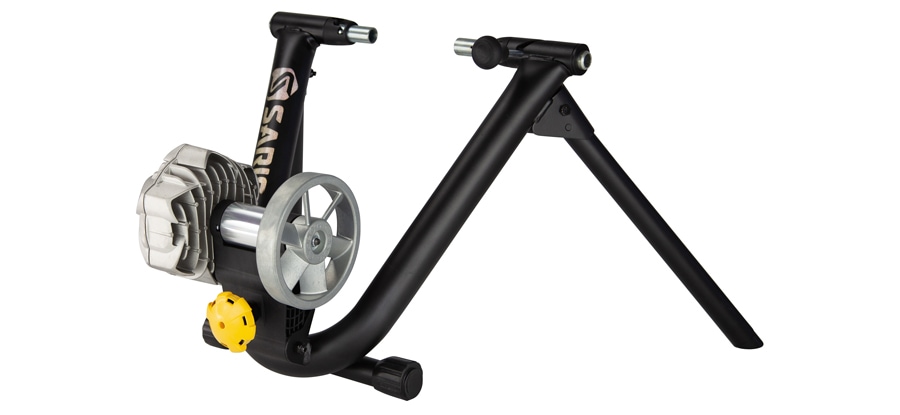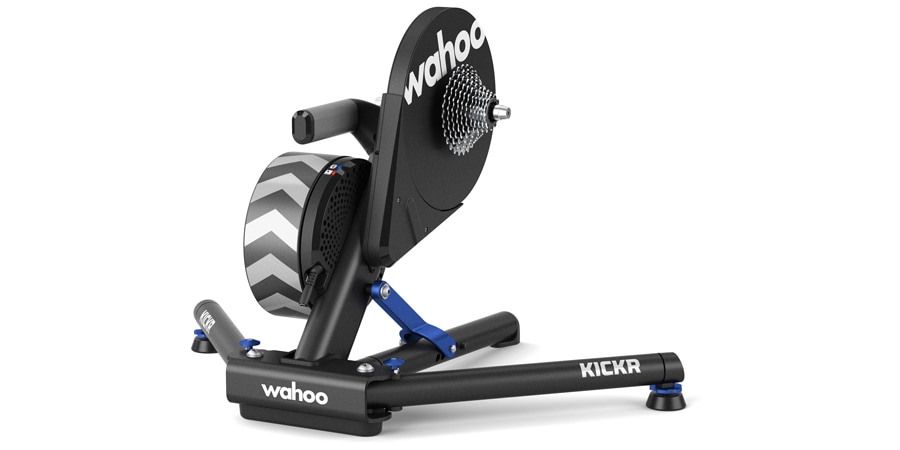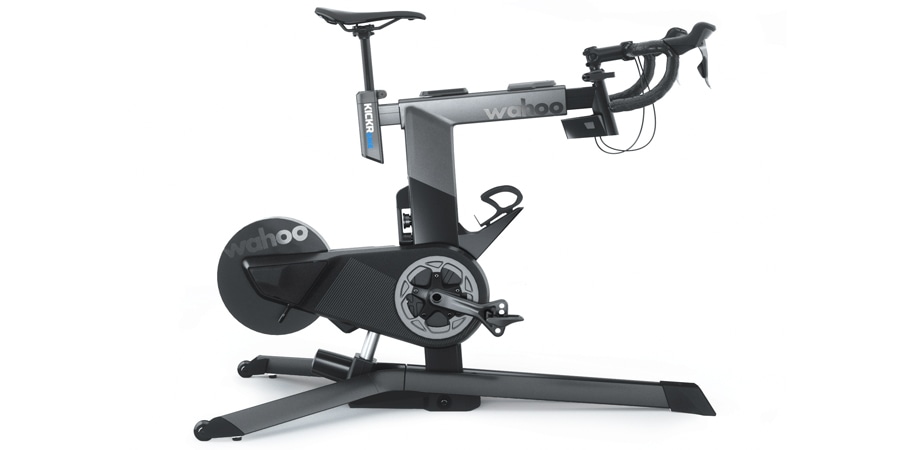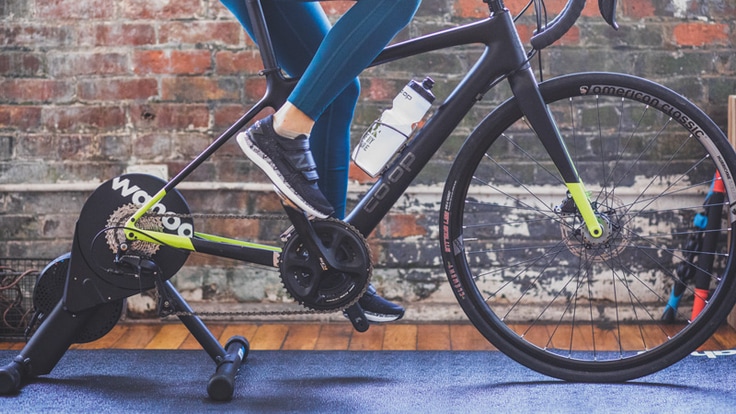Riding a bike trainer, once geared toward cyclists driven indoors by stormy, bitterly cold or oppressively hot weather, has evolved into an immersive exercise regimen in its own right. Whether you are looking for a fully interactive experience or are simply needing to maintain cycling fitness in the offseason, there's a bike trainer to meet your needs. This article offers an overview of your choices.
Types of Bike Trainers
Any basic bike trainer can provide a good aerobic workout. As you go up in price, models will offer greater precision and additional features. The biggest difference with more premium-priced trainers is their level of immersive technology. Trainer prices range from a few hundred dollars for a basic model without connectivity up to a few thousand dollars for a virtual cycling simulator.
Bike trainers fall roughly into these categories:
- Wheel-on trainer: This compact, affordable style attaches at the axle of your bike's rear wheel and uses a roller pressed against the tire to create resistance.
- Direct-drive trainer: On this style you remove your rear wheel and attach its mechanism directly to your bike's drivetrain. Smooth power transfer and app connectivity on many models can make the higher cost (roughly double wheel-on prices) well worth it.
- Bike simulator: This premium standalone exercise bike offers a realistic riding feel in a robust, comfortable and stable platform, along with wireless app connectivity.
"Smart" trainer: Although this is a feature rather than a separate category, the ability to wirelessly connect to the world of trainer apps is a notable distinction on any trainer. Sensors on software-controlled smart trainers change resistance to match the topography of virtual workouts. Feedback on fitness and performance metrics improves training efficiency; gamification features make workouts both fun and addicting (in a good way).
Bike Trainer Comparison
Wheel-On Trainer

| Pros: | Cons: |
|---|---|
|
|
Direct-Drive Trainer

| Pros: | Cons: |
|---|---|
|
|
Bike Simulator

| Pros: | Cons: |
|---|---|
|
|
Type of resistance: At one time this was an important shopping consideration, but advancements in technology have changed the buying focus to apps and connectivity instead. Fluid resistance, found in most wheel-on trainers, is valued for its smooth, quiet operation. That's still true, but sophisticated electronically controlled flywheels in most direct-drive trainers and bike simulators today also operate smoothly and quietly.
Trainer Apps
In recent years, innovative training apps have transformed the world of indoor bike training. Using a "smart" wireless connection to your trainer, these apps can provide workout control and fitness feedback like speed, cadence, power output, heart-rate data and more.
Some apps also include video ride simulations and motivational features like virtual training rides, route sharing and races. You and a friend who lives on in another state could ride (virtually) together on a classic route located in yet another location. (Note that this type of outdoor riding simulation is distinct from trainers that mimic an indoor spin-class experience.)
Popular subscription-based apps include Zwift, TrainerRoad, The Sufferfest, Rouvy and many more. If you already have a favorite app, then double-check to be sure the trainer you're considering is compatible. Some trainer brands also offer their own apps that range from free ones that allow you to control the trainer, share data and get real-time feedback on workout metrics on up to subscription-based ones that also offer virtual-training video features.
Shopping Tips
As you're deciding which trainer is right for you, consider these factors:
- Price: The least expensive option is a wheel-on, "not smart" trainer, which is fine if you're looking to save money and/or just want a simple workout option for occasional use. Direct-drive models offer a leap in performance but come in at roughly double the cost. Bike simulators will be an even bigger leap in price.
- Connectivity: For most people, the real-time workout feedback and social and virtual riding features that come with wireless connectivity to training apps are a game changer.
- Bike fit: Trainers can fit a wide range of bikes, but you need to double-check trainer and bike specs to be sure. REI.com lists these, and trainer brand websites have fit guides.
- Additional parts: Many direct-drive trainers require you to also buy a rear cassette that's compatible with your bike's drivetrain.
- Noise: Trainers have gotten much quieter over the years; most of the sound generated today comes from the drivetrain of your bike, rather than the trainer mechanism.
Trainer Accessories
Accessories for completing your trainer setup include simple sweat mats to protect your floor, sophisticated gear like headwind and climbing simulators, and special platforms that mimic the way a bike moves when you ride outside.

